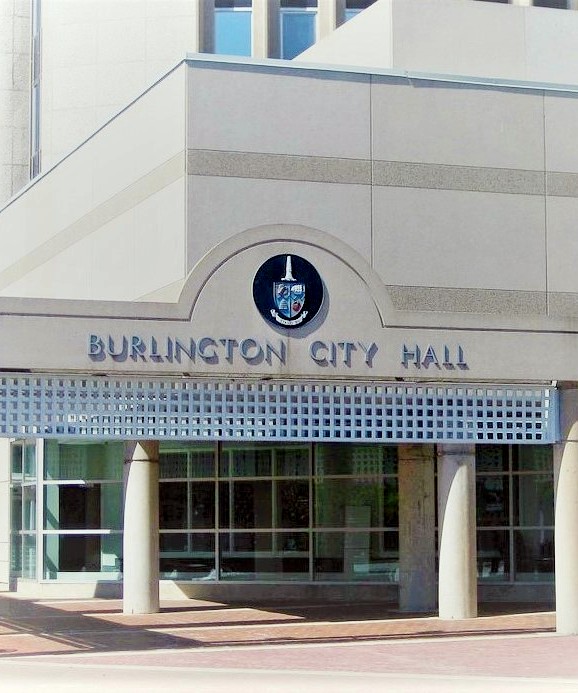Dec. 1, 2022 — Press release from the City of Burlington
Bill 23, the More Homes Built Faster Act, 2022 was passed by the Province of Ontario Legislature on Nov. 28, 2022, even though the deadline for feedback on the Bill has been extended to Dec. 9.
The changes in Bill 23 will significantly limit the city’s ability to provide and make important housing-related infrastructure and service decisions resulting in increased costs for Burlington residents.
Changes in Bill 23 that will have an impact on the city’s quality of life and revenues to support complete communities include:
- Removing tools available to the city to deliver housing which is affordable to many Burlington residents
- Removing the ability for the city to choose where to locate parkland for new developments
- Capping the amount developers contribute to new parkland
- Less fees the city can collect from developers for essential infrastructure like community centres, parks, roads and other community amenities
- Changes to existing heritage property planning: any property added to the heritage register must be heritage designated within two years or it will be automatically removed
- Changes to conservation authorities that impact our ability to mitigate risks of a changing climate and the Greenbelt boundary
The city has limited revenue sources and as result of Bill 23, residents may face higher property taxes. Bill 23 will also affect the city’s ability to provide much needed capital infrastructure to support growth such as roads, parks, community centres and other community amenities.
Ontario is in the midst of a housing affordability crisis. The City of Burlington Council approved the Burlington Housing Strategy in June 2022. In recent years, both staff and City Council have been active in reviewing and processing residential development applications with a total of 21,700 units in its development pipeline as of June 2022.
The province has proposed building 1.5 million new homes over the next ten years. Ontario is asking 29 municipalities, including Burlington, to commit to a housing pledge. Their expectation is these 29 municipalities, 25 of which are in the Greater Golden Horseshoe, will take on 80 per cent of the population growth to hit the target for new homes through accelerated growth. The province has assigned Burlington to add 29,000 new homes and prepare a housing pledge.
City staff presented Report CS-12-22 Consultations on Bill 23, the Build More Homes Faster Act, 2022 to City Council outlining the potential impacts on Burlington.
City of Burlington staff are responding to the Province of Ontario regarding Bill 23, More Homes Built Faster Act, 2022 using a set of guiding principles that are aligned with the City’s Vision 2040 – Burlington’s Strategic Plan, From Vision to Focus, the Official Plan and the Housing Strategy:
- More homes built faster
- Complete communities
- An engaged community
- Matters of Provincial interest
- Public health and safety
- Environment, urban design and climate change
Burlington is a city where people, nature and businesses thrive. Sign up to learn more about Burlington at burlington.ca/subscribe and follow @CityBurlington on social media.
Quick Facts – Bill 23
The province introduced Bill 23, More Homes Built Faster Act, 2022 on Oct. 25, 2022, with the goal to enable construction of 1.5 million new homes in Ontario by 2031.
Bill 23, the More Homes Built Faster Act, 2022 was passed by the Province of Ontario Legislature on Nov. 28, 2022. The deadline for feedback has been extended to Dec. 9.
The omnibus bill changes existing statutes including:
- The Planning Act,
- The Ontario Heritage Act,
- The Development Charges Act,
- The Conservation Authorities Act, and
- The Ontario Land Tribunals Act
Mayor Marianne Meed Ward says of Bill 23: “Bill 23 will devastate municipal finances and our ability to fund things such as parks, community centres, transit — all the amenities a growing community needs. Those costs will be shifted from for-profit developers to taxpayers. We’ll show that as a line item on your next tax bill.
There is no guarantee that savings will be passed on to buyers, or that buyers are first-time homebuyers and not investors. This will simply deliver profit on the backs of residents without doing anything to increase housing supply and affordability.
Minister Clark recently wrote to the Association of Municipalities of Ontario (AMO) and the Ontario’s Big City Mayors (OBCM) caucus), expressing the Province is committed to seeing Bill 23 through with no proposed additional changes to it and they are committed to ensuring municipalities are kept whole. However, there is no clarity around how this will happen. In addition, the Province is expecting municipalities to fill the gap in funding infrastructure by making applications to the Federal Housing Accelerator Fund.
Our recently completed Burlington Housing Strategy provides a roadmap for addressing local housing needs. It will help us increase attainable housing options that meet the needs of all current and future residents at all stages of life and at all income levels.
We are ready to be a partner with the province on housing supply and affordability, but this Bill won’t deliver either.”
Mark Simeoni, Director of Community Planning said of the bill: “The legislative amendments contained in Bill 23 amount to the most drastic changes to the land use planning process that Ontario has seen in decades. There will be considerable impacts on how Burlington plans and protects for appropriate development within the city.
Overall, the changes through Bill 23 will require the city to undertake significant revisions to its land use planning process and will have substantial impacts on associated planning and financial outcomes.”
Joan Ford, Chief Financial Officer, says: “Bill 23 will have significant and broad detrimental consequences to municipal finances. It will limit the City’s revenue potential to support growth-related infrastructure. The legislative changes are contrary to the guiding principle that growth pays for growth and shifts the burden on municipalities to fund growth-related infrastructure.”
Links and Resources



